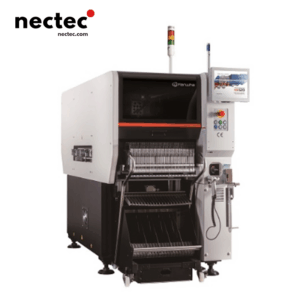In the rapidly evolving world of electronics manufacturing, Surface Mount Technology (SMT) has become a cornerstone for assembling printed circuit boards (PCBs). A crucial component of SMT production lines is the NG/OK buffer system, which plays a vital role in managing production flow and ensuring quality control. This article delves into the functionality, benefits, and implementation of automatic SMT PCB NG/OK buffers, offering insights for professionals in the electronics manufacturing industry.
What is SMT and the Role of PCBs?
Surface Mount Technology refers to the method of mounting electronic components on the surface of PCBs. This technique has largely replaced traditional through-hole technology due to its efficiency and compactness. PCBs serve as the backbone of electronic devices, providing electrical connections and physical support for components.
The rise of consumer electronics has escalated demand for high-quality PCBs, making efficient manufacturing processes a priority. However, quality assurance is paramount, leading to the development of systems that can differentiate between ‘Acceptable’ (OK) and ‘Non-Good’ (NG) boards during production.
The NG/OK Buffer System Explained
The NG/OK buffer system acts as a traffic control mechanism within an SMT production line. As PCBs are processed, they are inspected for defects. The system categorizes boards into two groups: those that pass inspection and are considered ‘OK’ and those that fail and are labeled ‘NG.’
This categorization is essential for streamlining operations. Boards that pass inspection are directed to the next stage of the assembly process, while NG boards are diverted for rework or repair. By automating this buffer system, manufacturers can significantly reduce human error and speed up production timelines.
Benefits of Automatic SMT PCB NG/OK Buffers
1. Enhanced Efficiency
The primary advantage of an automatic NG/OK buffer is improved efficiency. Automation minimizes the time spent sorting boards and reduces bottlenecks in the production line. With quicker decision-making on the fate of each board, manufacturers can maintain a continuous flow, enhancing overall productivity.
2. Quality Control
Quality is non-negotiable in electronics manufacturing. The automatic sorting feature of NG/OK buffers ensures that defective products are quickly identified and removed from the workflow. This not only prevents faulty products from reaching the customer but also aids in pinpointing recurring issues in the manufacturing process.
3. Reduced Labor Costs
By implementing an automated system, manufacturers can lower their dependency on manual labor for sorting and inspecting boards. This results in significant cost savings and allows human resources to be redirected to more complex tasks, including problem-solving and improving production strategies.
4. Data Collection and Analysis
Modern NG/OK buffer systems come equipped with data tracking capabilities. By collecting data on defect rates, types of failures, and their frequency, manufacturers can gain valuable insights into their processes. This data-driven approach helps in continuous improvement initiatives, which are critical in maintaining a competitive edge.
Implementing an Automatic SMT PCB NG/OK Buffer
Transitioning to an automatic NG/OK buffer system involves several key considerations. Here are some steps manufacturers should take for a successful implementation:
1. Assess Current Production Processes
Before integrating a new system, it’s essential to evaluate existing processes. Identifying bottlenecks and inefficiencies can inform the design of an NG/OK buffer that specifically addresses these challenges.
2. Choose the Right Equipment
Various suppliers offer different models of NG/OK buffers, each with unique features. Factors such as speed, accuracy, and compatibility with existing equipment should guide selection. Manufacturers should also consider scalability depending on future production demands.
3. Train Personnel
The success of the new system also hinges on the operators’ proficiency. Comprehensive training ensures that staff can effectively utilize the buffer system and troubleshoot any issues that may arise. Hand-in-hand with training is the importance of cultivating a culture of quality assurance among all employees.
4. Continuous Monitoring and Improvement
Once the system is implemented, continuous monitoring is crucial. Regular audits of the buffer performance and defect rates can highlight areas needing adjustments and improvements. This ongoing process is vital for maximizing the return on investment in the buffer system.
Future Trends in Automatic NG/OK Buffer Systems
The future of automatic SMT PCB NG/OK buffers looks promising, characterized by advancements in technology and integration with Industry 4.0 practices. Upcoming trends include:
1. AI and Machine Learning
Artificial intelligence (AI) and machine learning are set to revolutionize NG/OK systems. By analyzing data comprehensively, machine learning algorithms can predict defects before they occur, enabling proactive adjustments in the production process.
2. Increased Automation
The trend towards increased automation will continue, leading to more sophisticated sorting systems that can handle multiple inspection criteria simultaneously. This evolution will enhance speed and accuracy, further reducing the likelihood of human error.
3. Integration with IoT
As the Internet of Things (IoT) expands, NG/OK buffer systems will likely become even more interconnected with other manufacturing equipment. Real-time data sharing will allow for more efficient tracking of production metrics and rapid adjustments based on dynamic manufacturing conditions.
Conclusion
As the demand for high-quality PCB assemblies continues to grow, the implementation of automatic SMT PCB NG/OK buffers will remain a critical focus for manufacturers aiming to enhance efficiency and maintain competitive advantage. By understanding the intricate workings of these systems and implementing best practices, businesses can ensure they are equipped to meet the challenges of modern electronics manufacturing effectively.






